The TV That Time Forgot: I Remember Mama
 It seems like a contradiction in terms: forgetting I Remember Mama, but only the heartiest of Baby Boomers are likely to remember this gentle sitcom from TV’s early days. Based on the book, Mama’s Bank Account, by Kathryn Forbes. It recounted her growing up in turn-of-the-century San Francisco as a first-generation American with Norwegian parents.
It seems like a contradiction in terms: forgetting I Remember Mama, but only the heartiest of Baby Boomers are likely to remember this gentle sitcom from TV’s early days. Based on the book, Mama’s Bank Account, by Kathryn Forbes. It recounted her growing up in turn-of-the-century San Francisco as a first-generation American with Norwegian parents.
The first thing to note is that the TV series was not named “I Remember Mama.” Its official title was Mama. However, every episode began with a voiceover narration by the actress playing the eldest daughter Katrin Hansen. She always concluded the narration with the phrase, “…most of all, I remember Mama.” In addition, there was a Broadway play and feature film that preceded the TV series that WERE named I Remember Mama. So, most of us still called the show by the longer title.
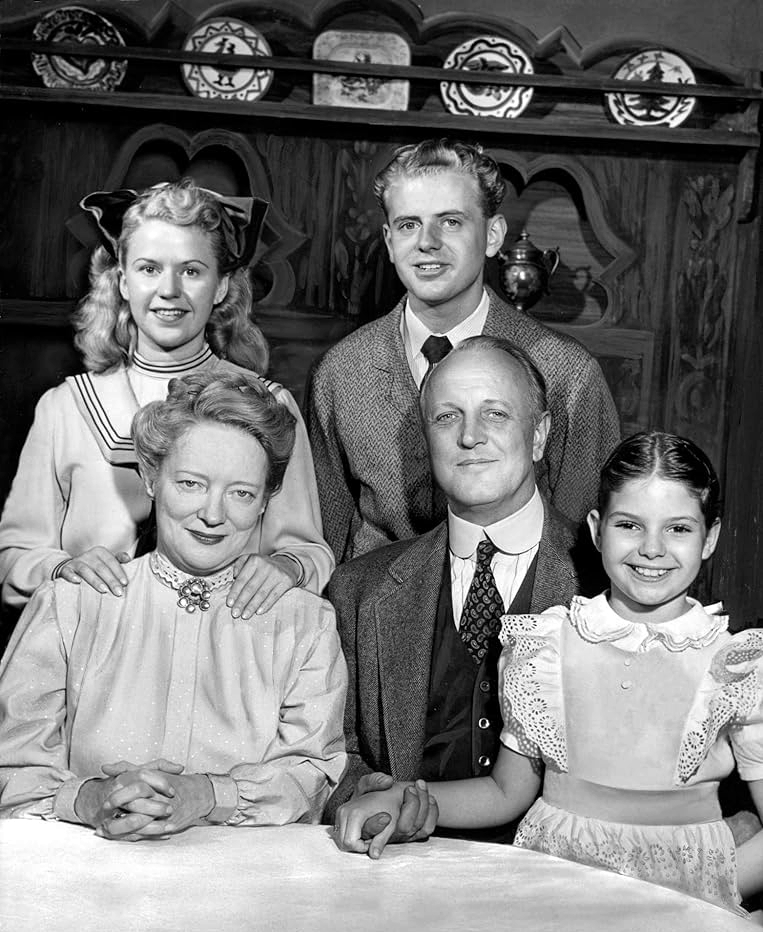 Like the book, play, and movie, the show revolved around the day-to-day struggle of the family to both adapt to American culture and to make ends meet. Mama was played by veteran actress Peggy Wood. Papa was Judson Laird, Rosemary Rice was Katrin, and eldest son Nels was played by a young Dick Van Patten. (BTW - Rosemary Rice played Archie's girlfriend Betty - of "Betty & Veronica" fame - on the long-running Archie Andrews radio seies. Her resemblance to the comic book character is incredible considering a radio performer didn't need to look like her character!)
Like the book, play, and movie, the show revolved around the day-to-day struggle of the family to both adapt to American culture and to make ends meet. Mama was played by veteran actress Peggy Wood. Papa was Judson Laird, Rosemary Rice was Katrin, and eldest son Nels was played by a young Dick Van Patten. (BTW - Rosemary Rice played Archie's girlfriend Betty - of "Betty & Veronica" fame - on the long-running Archie Andrews radio seies. Her resemblance to the comic book character is incredible considering a radio performer didn't need to look like her character!)
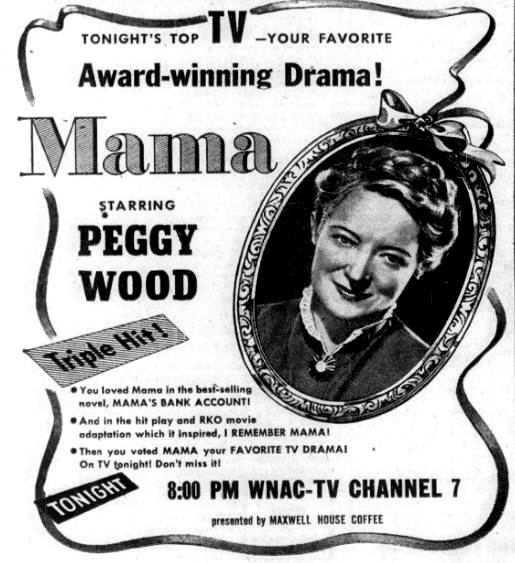 Mama’s first season was broadcast on CBS in 1949 and, like a lot of TV in those days, was broadcast live. For its first four seasons, the show consistently placed in the top 10 of the ratings. By the fifth season (1954-55), ratings had started to slip and by the end of its sixth season, CBS canceled the show. However, a mail campaign to save the show was launched. CBS received over 175,000 letters (quite a large sample in those days) and announced they would bring Mama back as a mid-season replacement in December 1956.
Mama’s first season was broadcast on CBS in 1949 and, like a lot of TV in those days, was broadcast live. For its first four seasons, the show consistently placed in the top 10 of the ratings. By the fifth season (1954-55), ratings had started to slip and by the end of its sixth season, CBS canceled the show. However, a mail campaign to save the show was launched. CBS received over 175,000 letters (quite a large sample in those days) and announced they would bring Mama back as a mid-season replacement in December 1956.
For the re-launch, they also decided to film the episodes rather than air them live. Unfortunately, by the time mid-season rolled around, there was no prime-time slot available on CBS. So, the network aired the show on Sunday afternoons at 5 pm. That was a disaster. The show generated almost no ratings and, although 26 episodes had been filmed, Mama was canceled by March 1957.
Those 26 filmed episodes were syndicated briefly in the late 50s and early 60s when there really weren’t that many reruns of prime-time series available, but with so few episodes and the fact they were all in black and white, Mama quickly vanished from TV land.
Today, a small handful of those later episodes can be found online or in DVD packages of early TV for those who still remember Mama.
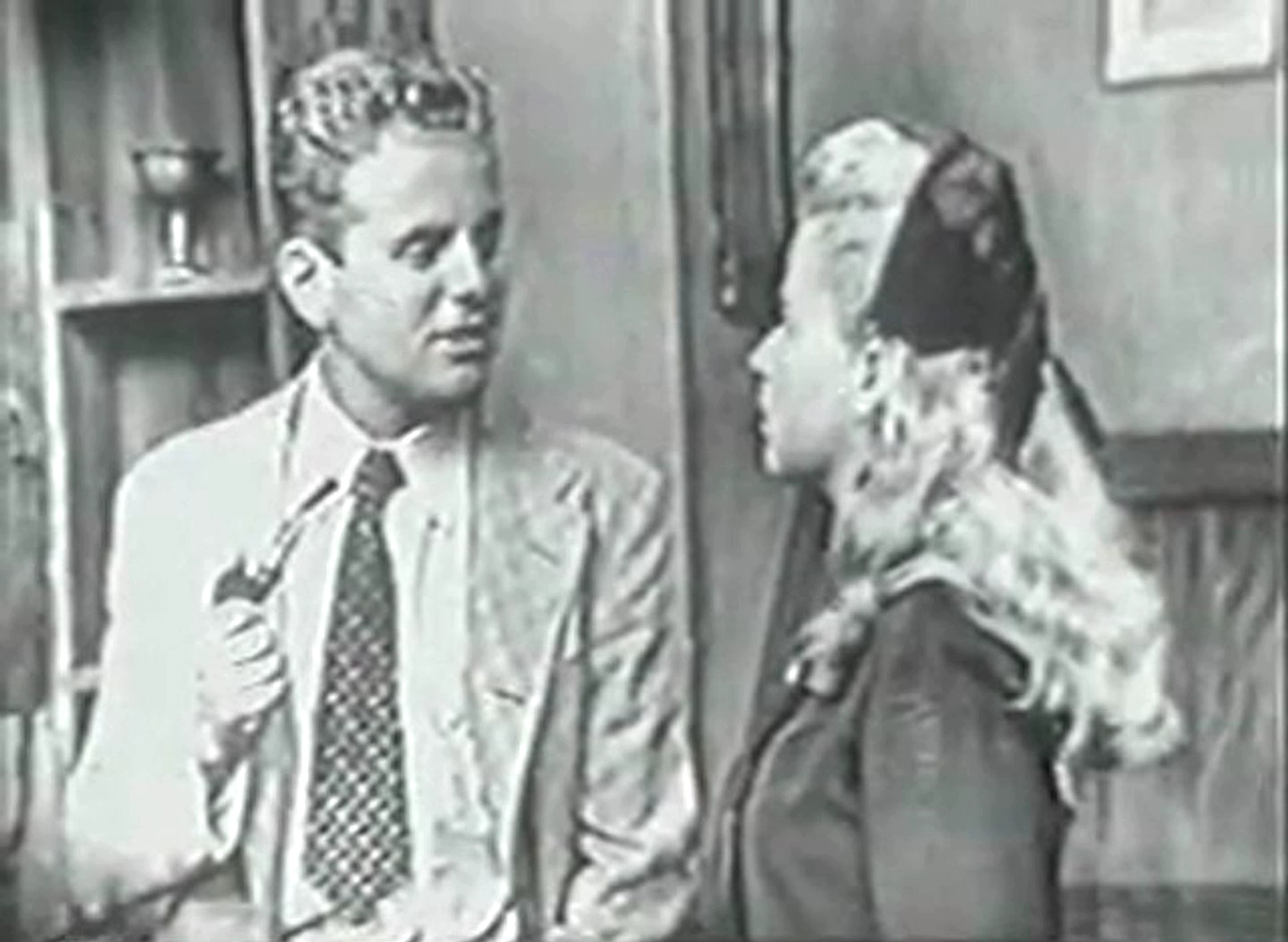
All That Glitters… Still Won’t Beat Inflation
 You often hear it said that investing in gold is “a good hedge against inflation,” meaning the value of that gold will rise faster than consumer prices. But it turns out that is not true. If you bought gold back in 1980, it would be worth a lot more today, but it still hasn’t kept up with inflation. In fact, most seasoned investors say there is no direct correlation between the inflation rate and the price of gold.
You often hear it said that investing in gold is “a good hedge against inflation,” meaning the value of that gold will rise faster than consumer prices. But it turns out that is not true. If you bought gold back in 1980, it would be worth a lot more today, but it still hasn’t kept up with inflation. In fact, most seasoned investors say there is no direct correlation between the inflation rate and the price of gold.
As always, never make a significant investment in anything without consulting a financial expert you trust.
Whatever Happed to Malt Shops?
 Back in the 1950s and early 60s, malt shops as well as malted milk were extremely popular all across America. Today, malt shops have virtually disappeared and malted milk is a beverage few below the age of 60 even remember let alone have ever tasted.
Back in the 1950s and early 60s, malt shops as well as malted milk were extremely popular all across America. Today, malt shops have virtually disappeared and malted milk is a beverage few below the age of 60 even remember let alone have ever tasted.
So what happened?
Malted milk was the creation of two English brothers who resettled in Racine, Wisconsin, James & William Horlick. In the early 20th century, they invented a compound of malted barley, wheat and powdered milk they trademarked as “malted milk.” The lads first marketed it as a nutritional baby food, but they were taken by surprise when older children and adults started to enjoy it as a soft drink.
 Around the same time, ice cream parlors and soda fountains were springing up as a healthier alternative to bars and nightclubs. Naturally, the lack of alcohol (and the subsequent need to be of drinking age to use same) also meant those parlors & fountains became popular hangouts for teenagers. In the 1940s, jukeboxes became standard equipment for any self-respecting soda fountain. Those soda fountains added ice cream to malted milk and the “malt” was born. Its popularity continued to rise through the decade. As we moved into the 1950s, malted milk had become a real favorite, so many of the aforementioned soda fountains renamed themselves malt shops.
Around the same time, ice cream parlors and soda fountains were springing up as a healthier alternative to bars and nightclubs. Naturally, the lack of alcohol (and the subsequent need to be of drinking age to use same) also meant those parlors & fountains became popular hangouts for teenagers. In the 1940s, jukeboxes became standard equipment for any self-respecting soda fountain. Those soda fountains added ice cream to malted milk and the “malt” was born. Its popularity continued to rise through the decade. As we moved into the 1950s, malted milk had become a real favorite, so many of the aforementioned soda fountains renamed themselves malt shops.
But as we moved into the 60s, a new trend in dining out would ultimately spell doom for the malt.
 Once Ray Kroc began franchising McDonald’s restaurants, the writing was on the wall. While there were people who didn’t like malted milk, virtually everybody liked milkshakes (essentially the same thing, just minus the malt powder), so the McDonald’s menu, kept ultra-simple in its early days, only featured milkshakes and not malts.
Once Ray Kroc began franchising McDonald’s restaurants, the writing was on the wall. While there were people who didn’t like malted milk, virtually everybody liked milkshakes (essentially the same thing, just minus the malt powder), so the McDonald’s menu, kept ultra-simple in its early days, only featured milkshakes and not malts.
The deluge of fast food joints that followed in Mickey Dee’s footsteps also copied their beverage menu, offering shakes but not malts. Until today, the malted milk is an item one has to look for. It’s still carried on the menus of some establishments, but there just aren’t many eateries willing to call themselves malt shops anymore. And we think that’s something worth crying in your milk over.
Anti-Aging Snacks

Some healthy noshes that actually have anti-aging properties:
Almonds – These tasty treats contain vitamin E, an antioxidant that protects cells from damage, helping to slow down the aging process.
Greek Yogurt – Yogurt can help in multiple ways. You get calcium, which aids the bones, protein, which supports the muscles, and probiotics, which help the gut.
Berries – Whether they’re blue, red or black, it doesn’t matter. These berries contain compounds that improve memory functions.
The Story Behind the Song: Wipe Out (1963)
 Perhaps the most famous instrumental in rock history and certainly its most famous drum solo is the surf rock classic, “Wipe Out,” composed and performed by the Surfaris.
Perhaps the most famous instrumental in rock history and certainly its most famous drum solo is the surf rock classic, “Wipe Out,” composed and performed by the Surfaris.
Recorded in late 1962, the band virtually made up the song on the spot at Pat Recording Studio in Cucamonga, California. The band was there recording “Surfer Joe,” a vocal piece they intended as the A-side of their first single. They had forgotten to think about a B-side for the single. So, Bob Berryhill, Pat Connolly, Jim Fuller, and Ron Wilson quickly recorded a simple 12-bar blues instrumental with that rather flashy drum solo by Wilson.
The title, of course, came from southern California surfer slang for falling off your surfboard, especially in a spectacular fashion. A band member, now lost to time, suggested starting the song with the crackling sound of a surfboard breaking up. The group‘s manager, Dale Smalin, provided the maniacal “Ha-ha-ha Wipe out!” cry that kicks off the record.
 It may have been that cry that put a kink in the Surfaris’ plans. Because deejays in those wilder, less restrictive times, bypassed “Surfer Joe” and started playing the B-Side. During the summer of 1963, “Wipe Out” actually made it all the way to #2 on the Billboard Hot 100 (held out of the top spot by Stevie Wonder’s debut recording, “Fingertips”).
It may have been that cry that put a kink in the Surfaris’ plans. Because deejays in those wilder, less restrictive times, bypassed “Surfer Joe” and started playing the B-Side. During the summer of 1963, “Wipe Out” actually made it all the way to #2 on the Billboard Hot 100 (held out of the top spot by Stevie Wonder’s debut recording, “Fingertips”).
The song was re-released in 1966 and got to #16 the second time around. The original recording or covers by other artists have been featured in more than 20 movies and TV shows, appearing in at least one per decade. And its drum solo became the hallmark by which any garage band drummer of the 1960s was judged.
While the Surfaris never duplicated the success of “Wipe Out,” the song was inducted into the Grammy Hall of Fame in 2020.
And Pat Recording Studio? It was eventually purchased by a young employee they hired who was eager to learn about the recording business. Some SoCal kid named Frank Zappa.
Roger Corman (1926-2024)
 One of the real giants of the motion picture industry passed away in May at the age of 98. Yet, for most of his career, the industry looked down on him as a guy who cranked out cheaply made movies that primaritly played at drive-in theaters.
One of the real giants of the motion picture industry passed away in May at the age of 98. Yet, for most of his career, the industry looked down on him as a guy who cranked out cheaply made movies that primaritly played at drive-in theaters.
Roger Corman broke into the movie business in 1948 as a mail room messenger boy at Paramount Pictures. After years of bouncing around in various jobs, including some time spent living in Paris, Corman sold his first script in 1954 for a low-budget film called Highway Dragnet.
Corman took the money he made from his script and found some other money from show biz contacts he’d made and financed his first directorial effort, Monster from the Ocean Floor (1954). Made on a budget of just $12,000, the film turned a profit, so he was allowed to produce a second film, The Fast and the Furious (1955). Yes, this little hot rod epic did inspire the multi-million dollar, multi-sequel franchise of today.
Corman’s second film was distributed by a low-rent outfit called American Releasing Company. They liked Corman’s product and were happy to advance him money to make other films. Corman quickly established himself as a producer/director who could bring films in on time and under budget.
 Along the way, American Releasing Company changed its name to American-International Pictures, cranking out pictures to feed the boom in drive-in theaters that were springing up all over the United States. Corman divided his time between grinding out pictures for AIP and Allied Artists, another Poverty Row distributor. He worked in all the genres that were big at the drive-ns, Westerns, science-fiction, horror, and gangster pics. In fact, it was his Machine Gun Kelly (1958) that got him his first positive reviews (and gave Charles Bronson his first starring role). That same year, his The Cry Baby Killer gave Jack Nicholson his first lead.
Along the way, American Releasing Company changed its name to American-International Pictures, cranking out pictures to feed the boom in drive-in theaters that were springing up all over the United States. Corman divided his time between grinding out pictures for AIP and Allied Artists, another Poverty Row distributor. He worked in all the genres that were big at the drive-ns, Westerns, science-fiction, horror, and gangster pics. In fact, it was his Machine Gun Kelly (1958) that got him his first positive reviews (and gave Charles Bronson his first starring role). That same year, his The Cry Baby Killer gave Jack Nicholson his first lead.
Corman had a reputation for completing films quickly. His best-known movie, Little Shop of Horrors (1960), was shot in just two days. Reportedly, Corman wanted to see if it was actually possible to complete a feature film that quickly.
 As he moved through the sixties, Corman became very well-known for a series of 8 pictures he made based on the works (or at least the titles) of Edgar Allen Poe. These included The Raven, Masque of the Red Death, and House of Usher.
As he moved through the sixties, Corman became very well-known for a series of 8 pictures he made based on the works (or at least the titles) of Edgar Allen Poe. These included The Raven, Masque of the Red Death, and House of Usher.
From the seventies through the eighties, Corman concentrated on producing more than directing but continued to crank out films that have become cult classics like Rock ‘n’ Roll High School, Grand Theft Auto, Boxcar Bertha, and Death Race 2000.
Corman’s influence goes way beyond his filmography. He gave starts to directors Francis Ford Coppola, Martin Scorsese, Peter Bogdanovich, Jonathan Demme, Joe Dante, Ron Howard, and James Cameron. Acting graduates of his drive-in pics include Jack Nicholson, Peter Fonda, Bruce Dern, Dennis Hopper, and Diane Ladd.
And it doesn’t stop there. As a distributor, Corman brought to American screens the films of Federico Fellini, Ingmar Bergman, François Truffaut, and Akira Kurosawa.
 We are unlikely to see his like again. But if you’d like to salute this great American filmmaker by watching one of his cinema classics tonight, here’s just a partial list of his films not already mentioned in this post:
We are unlikely to see his like again. But if you’d like to salute this great American filmmaker by watching one of his cinema classics tonight, here’s just a partial list of his films not already mentioned in this post:
- The St. Valentine’s Massacre
- Tales of Terror
- X: The Man with the X-Ray Eyes
- Buckets of Blood
- I, Mobster
- The Wild Angels
- The Wasp Women
- The Trip
- Bloody Mama
Are You on a Sucker List?
 Law enforcement calls them “rebound scams.” It’s when someone who’s been scammed once, gets scammed again. It’s not a rare occurrence.
Law enforcement calls them “rebound scams.” It’s when someone who’s been scammed once, gets scammed again. It’s not a rare occurrence.
62% of people who were scammed once, got scammed again. In fact, the average number of times a victim gets scammed is 59! Why? There are a couple of reasons:
1.) Scam artists, like any business, keep a record of who they've done business with. That way they know who may be ripe to be conned again, especially if they’re small dollar amount scams. Nicking a mark for $20 or $40 a pop may not seem like much, but if they clip you 59 times, that can add up to between $1,180 and $2,360.
2.) Scam artists can also sell their lists to other scammers. It can be a complicated computer database or as simple as a hand-written list, but “lead lists” can be reused over and over to steal from the unwary.
Once on such a lead list, it’s unlikely your name will ever be removed, so what can you do to reduce your risk of falling victim to a rebound scam?
Tell Your Family – Embarrassing as it may be to admit you were conned, studies have shown that telling family members can reduce your chances of falling for another con by as much as 50%.
Practice Scam Prevention – Never answer scam emails promising you free merchandise, even if they seem to be coming from a legitimate retailer. Big corporations simply don’t use this type of email for promotions. Don’t give your credit card, bank account, or social security number out over the phone. Other tells: con artists frequently ask for payment in the form of gift cards, financial transfer apps, or cryptocurrency – all of which leave you with no way to ever recover the money.
Avoid Recovery Scams – These types of cons add insult to injury. The scammers use the lead list to call and offer to recover the money you’ve already lost but for a fee. Once you’ve paid the fee, they disappear.
Be Smart with Your Smartphone – Never answer calls or text messages from people & numbers you don’t recognize.
Maximum Impact: The Miniskirt
 No other fashion trend quite represents the “swinging sixties” like the miniskirt!
No other fashion trend quite represents the “swinging sixties” like the miniskirt!
Hemlines had started to creep up as we moved from the fifties into a new decade, moving up above the knee for the first time since the Roaring Twenties. But it wasn’t until the British Invasion moved the center of fashion from Paris and New York to London that skirt lengths shortened radically and the miniskirt was born.
There is some debate over who really started the trend. Carnaby Street designer Mary Quant gets credit, but there is evidence that she wasn’t the first designer in London to come up with the idea. Regardless, young girls all over the world quickly embraced the design.
 Here in the U.S.A., the miniskirt gave school principals fits. Schools across the country broke out yardsticks and spent many a morning measuring skirt lengths and sending home those hussies. Of course, many smart girls would begin by wearing a somewhat longer skirt to get by their parents and school officials at the start of the day. Then, they would head to the girl’s bathroom and readjust the length of their skirts to be as short as they thought they could get away with.
Here in the U.S.A., the miniskirt gave school principals fits. Schools across the country broke out yardsticks and spent many a morning measuring skirt lengths and sending home those hussies. Of course, many smart girls would begin by wearing a somewhat longer skirt to get by their parents and school officials at the start of the day. Then, they would head to the girl’s bathroom and readjust the length of their skirts to be as short as they thought they could get away with.
(it will seem totally strange to people under the age of 60, but during that decade most schools did not allow girls to wear slacks to school – dresses and skirts only.)
Despite their length, true sixties’ miniskirts were not tight or form-fitting. Instead, they looked like the simply flared, A-line skirts of the 1950s, just cut shorter.
As this style was not conducive to wearing stockings with garters, the miniskirt also helped popularize the recently introduced pantyhose as well as a variety of colored tights.
Of course, a few designers tried going even shorter with the micromini, and skirt lengths continue to go up and down with each new fashion season, but the miniskirt has never really disappeared from the fashion scene.

Step Up to a Longer Life
 Research conclusively proves that walking is good for your health and can actually extend your life. A study in Europe found that walking right around 2 miles a day can reduce your risk of dying from anything!
Research conclusively proves that walking is good for your health and can actually extend your life. A study in Europe found that walking right around 2 miles a day can reduce your risk of dying from anything!
If that sounds like too much (especially if you haven’t been walking at all), walking just 1,000 steps a day (about 10 minutes’ worth) can reduce your risk of dying by 15%. Walking just 500 steps a day can drop your risk of dying from cardiovascular disease by 7%.
So take some steps to increase your lifespan today!
4 Perfect Debut Albums
Debut albums. They really have never been “make-it-or-break-it” kind of releases as many of rock’s greatest acts had less than stellar initial offerings. But the reverse can sometimes be a bit of a curse.
Here are just a few debut albums that may also be these artists’ best albums:
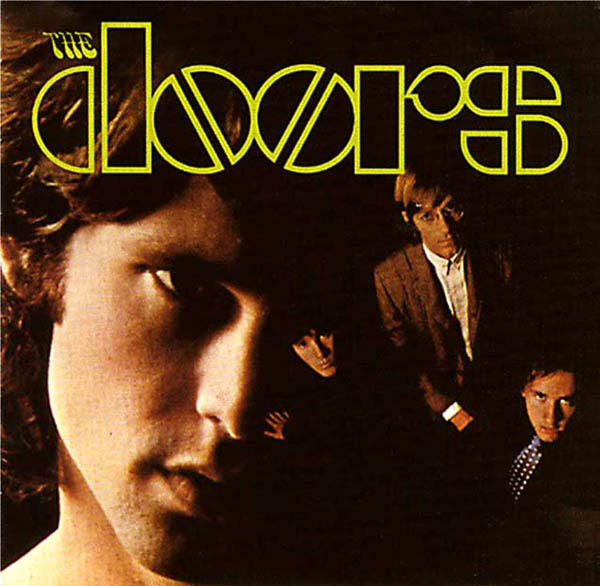 The Doors – Their first, self-titled LP was an instant classic, giving us “the long version” of “Light My Fire,” which clearly indicated the way rock was going to go in the next few years. It also contained bona fide classics like “Break on Through,” “Soul Kitchen,” and “Twentieth Century Fox.” Add to that one of the obligatory roots blues numbers so popular at that time, “Back Door Man,” and a weird 1925 German opera song written by playwright Bertold Brecht & composer Kurt Weil, “Alabama Song.”
The Doors – Their first, self-titled LP was an instant classic, giving us “the long version” of “Light My Fire,” which clearly indicated the way rock was going to go in the next few years. It also contained bona fide classics like “Break on Through,” “Soul Kitchen,” and “Twentieth Century Fox.” Add to that one of the obligatory roots blues numbers so popular at that time, “Back Door Man,” and a weird 1925 German opera song written by playwright Bertold Brecht & composer Kurt Weil, “Alabama Song.”
And of course, the cherry on top, the long, stream-of-consciousness ramblings of “The End” (allegedly recorded while Jim Morrison was tripping on acid). While the Doors had a long, successful career until Morrison’s tragic end, as far as the critics were concerned nothing ever matched up to their maiden voyage.
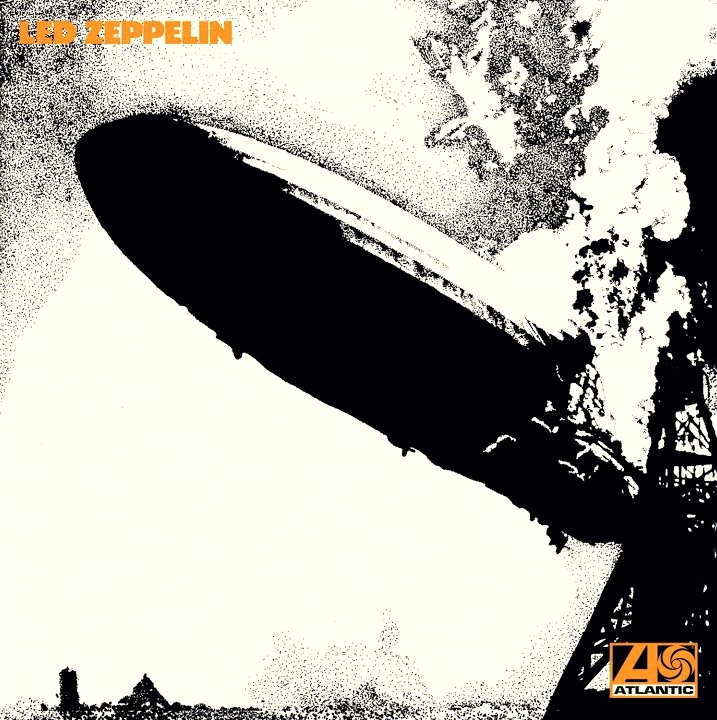 Led Zeppelin – The band actually began life as “The New Yardbirds,” thrown together by Jimmy Page to cover some gigs the Yardbirds had been contracted for before they decided to break up. However, once they got together, Page, Robert Plant, John Paul Jones, and John Bonham decided it made more sense to create a musical identity that owed nothing to the Yardbirds’ past. Their first album was actually recorded before the band even had a record deal. They financed it themselves. This gave the band total creative control. The album was an instant favorite on the newly emerging string of “progressive” radio stations that were popping up on the FM dial. With songs that remained live favorites for years like “Communication Breakdown,” “Dazed and Confused,” and “Good Times Bad Times,” this LP instantly established Led Zeppelin as one of rock’s top acts when it was released in 1968.
Led Zeppelin – The band actually began life as “The New Yardbirds,” thrown together by Jimmy Page to cover some gigs the Yardbirds had been contracted for before they decided to break up. However, once they got together, Page, Robert Plant, John Paul Jones, and John Bonham decided it made more sense to create a musical identity that owed nothing to the Yardbirds’ past. Their first album was actually recorded before the band even had a record deal. They financed it themselves. This gave the band total creative control. The album was an instant favorite on the newly emerging string of “progressive” radio stations that were popping up on the FM dial. With songs that remained live favorites for years like “Communication Breakdown,” “Dazed and Confused,” and “Good Times Bad Times,” this LP instantly established Led Zeppelin as one of rock’s top acts when it was released in 1968.
Unlike the Doors, many of the group’s subsequent albums were better than or at least equal to this first offering.
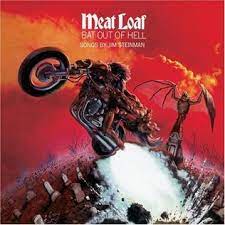 Meat Loaf: Bat Out of Hell – Marvin Aday, under his stage name Meat Loaf, was touring with a National Lampoon stage show. For some reason, fledgling composer Jim Steinman was also along on that tour. The two bonded and began working on a rock opera project based on Peter Pan that Steinman called Neverland. That soon morphed into taking 3 songs from the Neverland project and combining them with 4 new Steinman songs to become a project we now know as Bat Out of Hell.
Meat Loaf: Bat Out of Hell – Marvin Aday, under his stage name Meat Loaf, was touring with a National Lampoon stage show. For some reason, fledgling composer Jim Steinman was also along on that tour. The two bonded and began working on a rock opera project based on Peter Pan that Steinman called Neverland. That soon morphed into taking 3 songs from the Neverland project and combining them with 4 new Steinman songs to become a project we now know as Bat Out of Hell.
Unable to get any record label interested in them, Mr. Loaf and Steinman recorded the album by themselves over a two-year period (1975-76). Somehow, the duo landed Todd Rundgren as their producer.
What followed was a series of brutal rejections by virtually every major label. Finally, the album secured a release in 1977 through the tiny Cleveland International label. It went on to sell more than 43 million copies (making the major labels look pretty stupid) and established Steinman as a composer who went on to have hits with artists as wide-ranging as Barry Manilow, Bonnie Tyler, and Boyzone.
Unfortunately, Meat Loaf never did find much success singing anyone else’s songs. After their long-delayed Bat follow-up Dead Ringer stiffed, a brief period of feuding between the two ensued. Eventually, they patched things up and Meat Loaf went on to record 3 more LPs of Steinman’s compositions.
 The Cars – By the late 70s, much of rock was mired in over-produced, self-important sludge. The remedy was a back-to-basics movement dubbed “new wave.” And one of the leading proponents of that wave was this little band from Boston led by Ric Ocasek. Their debut album, released in 1978, has some interesting parallels to the Doors. Both LPs came out on Elektra Records. Both featured multiple cuts that got extensive FM airplay, and most critics considered both debut albums to be each band’s best.
The Cars – By the late 70s, much of rock was mired in over-produced, self-important sludge. The remedy was a back-to-basics movement dubbed “new wave.” And one of the leading proponents of that wave was this little band from Boston led by Ric Ocasek. Their debut album, released in 1978, has some interesting parallels to the Doors. Both LPs came out on Elektra Records. Both featured multiple cuts that got extensive FM airplay, and most critics considered both debut albums to be each band’s best.
While the album peaked at #18 on the Billboard chart, it had remarkable staying power and wound up at #4 when the magazine released its year-end chart covering sales & airplay for all of 1978.
With a second side that featured each track seamlessly segueing into the next, band member Elliot Easton has said of the album, "We used to joke that the first album should be called The Cars' Greatest Hits.”
Pop Up Player
Latest Posts–Movies & TV
-
Halloween Movie Ideas - Take 2
GORGON (1964) We were born too late to experience the great Universal horror films in first run theaters. Instead, we watched them on our local TV station’s “Shock-Horror-Monster-Chiller-Nightmare Theater.” You remember. Those late night weekend…
-
Halloween Movie Ideas
I WALKED WITH A ZOMBIE I Walked with a Zombie may be the best movie with the dumbest title in motion picture history. Cranked out by the b-movie horror unit at RKO pictures in 1943,…
-
Now Playing at the Boomtown Drive-In: "I Married a Monster from Outer Space"
Just like I Walked with a Zombie, behind the incredibly silly title lurks a pretty decent little B-movie. I Married a Monster from Outer Space was made by Paramount Pictures in 1958. Directed by Gene…
-
The TV That Time Forgot: Hazel (1961-66)
Hazel was a very popular sit-com that ran for 5 seasons (4 in full color), producing 154 shows, that was also quite popular in syndication. The show was based on a popular one panel cartoon…
-
The TV That Time Forgot: Annie Oakley
There was a time when Westerns dominated television programming so thoroughly that it was tough (with no home video, no streaming, and just 3 networks if you lived in a city big enough to have…
-
The TV That Time Forgot: My Living Doll (1964-65)
For a show that lasted only a single season, a surprising number of Baby Boomers remember the situation comedy My Living Doll. Perhaps that’s because once seen, Julie Newmar cannot easily be forgotten. The situation…


